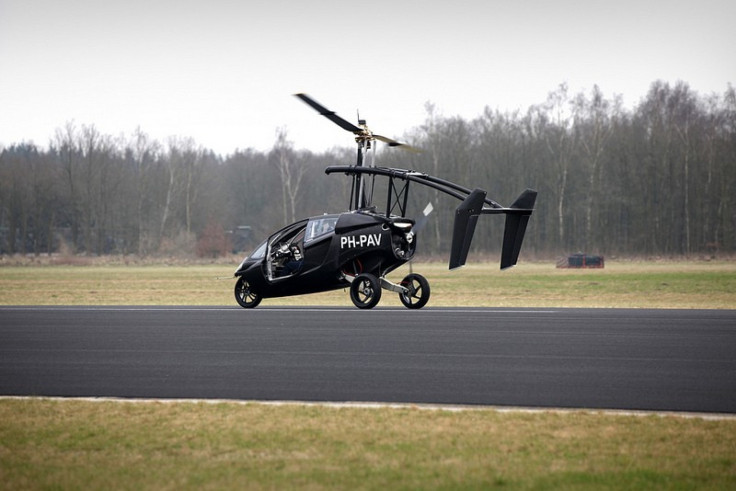The Flying Car Has Landed: PAL-V Takes Flight [VIDEO]

Flying cars are back on the radar as the PAL-V took to the air for its maiden flight, the Dutch company PAL-V Europe NV announced Sunday.
The PAL-V made several test flights from Gilze Rijen Airport in the Netherlands over the past two weeks, and the successful tests mean that the flying car is ready to swoop into production.
We have started the next phase already, from engineering prototype to the market, PAL-V CEO and co-founder Robert Dingemanse said Monday.
PAL-V plans to deliver its first vehicles to customers in 2014 at a cost of approximately €200,000 ($266,480) apiece, while PAL-Vs for special applications will probably cost more.
The PAL-V is a street-legal, gasoline powered car, although there will be biodiesel versions as well, which converts into a gyrocopter for flight. As a gyrocopter, the PAL-V is driven by a propeller at its rear and given lift and stabilized by an unpowered top rotor. The PAL-V takes off and lands at low speed, and because of the gyrocopter design, cannot stall.
The PAL-V is capable of flying up to 315 miles and has a driving range of 750 miles. It has a top speed on land and air of 110 mph. The PAL-V is able to take off within 540 feet on either pavement or grass and can land practically anywhere, according to the company.
This will be a revolution in door-to-door transportation similar to the transition from horse-and-buggy to the automobile. Leave home and fly-drive to almost any destination. Avoid traffic jams and cross lakes, fjords, rivers or mountain ranges like an eagle, the company said.
There are lots of buyers who would like to avoid traffic jams and mountains like an eagle, according to Dingemanse. The big appeal of the PAL-V will be its ability to fly over obstacles, a capability traditionally unique to aircraft, but still be able to travel on land in the event of poor weather conditions, as one would with a car.
We think we can be at least successful in the private plant market, and if you take the top of the car market, we are looking at a couple thousand vehicles a year, Dingemanse said, The applications vary between the customer groups -- the professional customers who are interested range from customs to police to aid groups to mining operations.
A recent NASA study predicted that 2 to 4 percent of the car market will eventually transition to private planes, Dingemanse said.
The PAL-V also seems like it could lead to some awesome motorsport, the equivalent of a vehicular biathlon, and the idea is under consideration. When asked if there were plans to have a PAL-V racing series, Dingemanse replied, I've never had that question before. Maybe ... I'll think about it.
© Copyright IBTimes 2024. All rights reserved.











